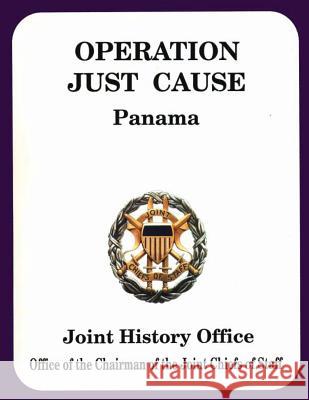Operation Just Cause Panama » książka
Operation Just Cause Panama
ISBN-13: 9781482738902 / Angielski / Miękka / 2013 / 100 str.
In the summer and fall of 1989, while American attention focused on events in Eastern Europe which heralded the end of the Cold War, developments in Panama raised the possibility of combat much closer to home. Operations in Panama would test the changes to the U.S. military command system brought about by the Goldwater- Nichols Defense Reorganization Act of 1986. Panama would also try the team at the head of that system-President George H. W. Bush, Secretary of Defense Richard B. Cheney, and the new Chairman of the Joint Chiefs of Staff (CJCS), General Colin L. Powell, U.S. Army. Strengthened by personal relationships formed during earlier administrations, this team would, in a large measure, determine the operational success of the Goldwater-Nichols reforms. Widely viewed as the most significant defense legislation since the National Security Act of 1947, Goldwater-Nichols sought to streamline the command and control of U.S. military forces engaged in contingency operations. In 1988, as relations with Panama deteriorated, the commander of U.S. Southern Command (SOUTHCOM), General Frederick F. Woerner, Jr., U.S. Army, had developed a strategy which gradually increased the strength of U.S. forces in Panama to deter the dictator, General Manuel Noriega, from attacking U.S. citizens or interfering with the Panama Canal. If deterrence failed, Woerner planned to bring in additional forces from the United States over a three-week period before taking action against Noriega. But after Noriega overturned the results of the Panamanian election of May l989, President Bush lost patience with General Woerner's approach and replaced him with General Maxwell R. Thurman, U.S. Army. Aggressive by nature, Thurman modified the BLUE SPOON plan to accommodate a major shift in the strategy for dealing with Noriega. Accelerating the buildup of U.S. forces in Panama, Thurman also shortened the timetable for the deployment of additional forces from the U.S. to three days. Hoping to take Noriega by surprise, General Thurman intended to overwhelm the dictator's forces before they could organize effective resistance or take U.S. citizens hostage. Thurman took advantage of the CINC's power under Goldwater-Nichols to select Lieutenant General Carl W. Stiner, U.S. Army, the Commander of the XVIIIth Airborne Corps, to command a joint task force of 22,000 soldiers, 3,400 airmen, 900 Marines, and 700 sailors. General Powell approved Thurman's action. The result was a force with unity of command and good interoperability which would rapidly achieve its operational objectives. In late l989 relations with Panama grew sharply worse. On 15 December l989, the National Assembly passed a resolution that a state of war existed with the United States, and Noriega named himself the Maximum Leader. Violence followed the next evening when a Panamanian soldier shot three American officers; one, First Lieutenant Robert Paz, U.S. Marine Corps, died of his wounds. Witnesses to the incident, a U.S. naval officer and his wife, were assaulted by Panamanian Defense Force (PDF) soldiers while in police custody. In the early hours of 20 December, conventional task forces seized additional key points and the land approaches to Panama City. The operational success of JUST CAUSE rewarded efforts by Congress and the Bush administration to avoid repeating the mistakes of Lebanon and Grenada. The determination of President Bush and the enhanced authority of the Chairman and CINC combined to provide specific, readily attainable objectives and responsive and effective command and control while giving the tactical commander considerable operational freedom. However, when shortcomings in prior planning and mistakes by local commanders embarrassed the administration, General Powell acted to ensure the political success of the operation.
Zawartość książki może nie spełniać oczekiwań – reklamacje nie obejmują treści, która mogła nie być redakcyjnie ani merytorycznie opracowana.











